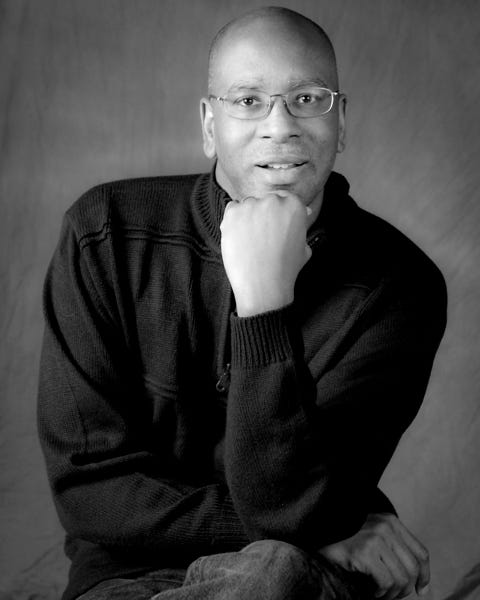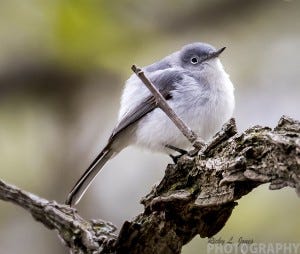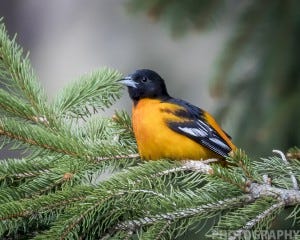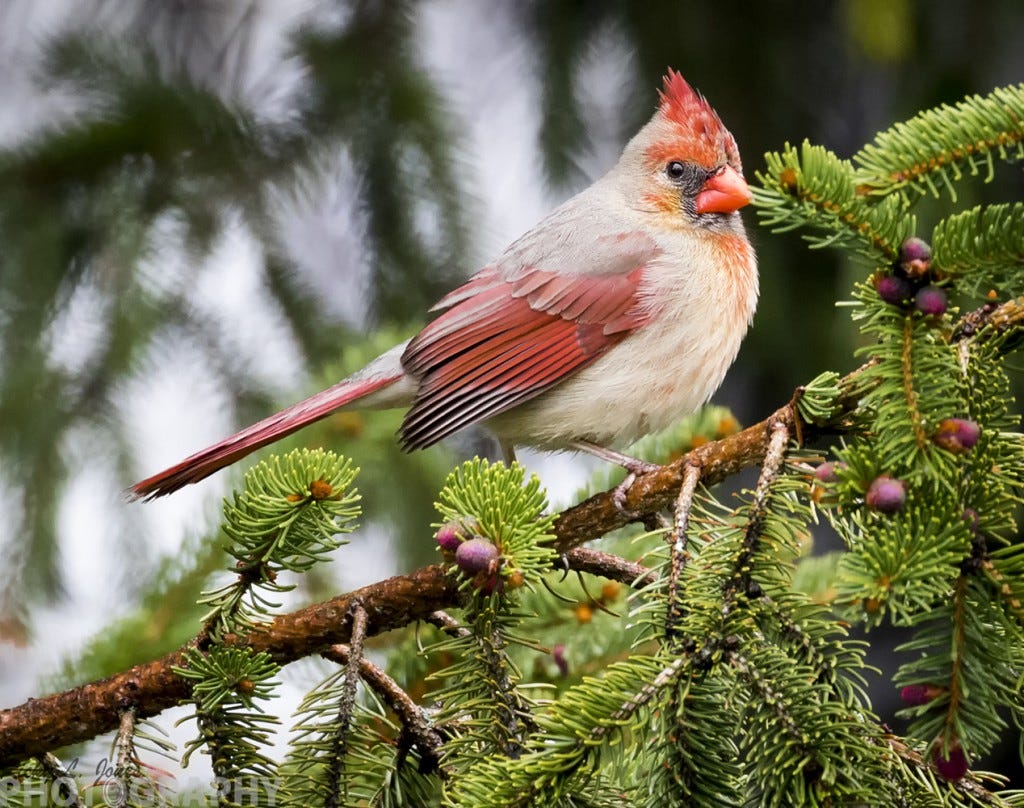
Ricky L. Jones was born in Memphis, Tenn., but currently resides in southeastern Wisconsin. He’s a Distance Learning Technician for Gateway Technical College and says he’s “basically a computer tech that helps students with their computers and software."
In his spare time, Ricky explores his all-time favorite hobby — bird photography.
 PP: Hello Ricky! How did you get started photographing birds?
PP: Hello Ricky! How did you get started photographing birds?
RLJ: I’ve been a photographer since about 1980. I took my first photography class in High School and have been hooked since then. In the ’90s I started to do weddings, portraits and event photography. After that dried up in the 2000s, I looked for something else to do with my photography.
Since I love wildlife, nature and birds, I started to take bird pictures –badly in the beginning — but I stuck to it. I spent a lot of my time studying the great wild life photographers like Art Wolfe, Steve Winter and Arthur Morris.
PP: Where are some of your favorite spots for taking bird photographs?
RLJ: I’ve been to some great places in my time as a wildlife photographer, but not nearly as many places as I want to go! I hope to visit those places after I retire.
Here in Wisconsin, without a doubt, my favorite place to visit is the Horicon Marsh Wildlife Area, it’s about a 1.5-hour drive northwest of where I live. My birding friends and I try to make it up there a few times a year. Horicon is great! One reason is that it’s the largest freshwater cattail marsh in the United States and is teeming with wildlife of all kinds. If you take a look at my photos, you will see a lot of photography from there.
Another great place, a lot closer to home, is Bong Recreation Area, in Kenosha County, just south of my home. Bong is a 4,500-acre managed-prairie area. It was going to be an Air Force base back in the ’60s. The base was never finished, so it turned into what we see today.
I also love visiting Bay Beach Wildlife Sanctuary up in Green Bay Wisconsin. Bay Beach is what they call an urban wildlife refuge featuring dozens of birds, exhibits and hiking paths. Great place to visit, if you’re ever up near Green Bay.
My backyard is also one of my favorite places to take pictures of birds. In the spring, I set up a temporary bird blind, and spend hours taking pictures of the migratory birds that stop by and use our feeders.
PP: What’s your favorite bird to photograph?
RLJ: I actually get this question a lot. Beginner birders want to know what my favorite birds are, and if I like taking pictures of big birds or small birds better.
If I have to choose one, it would be the Sandhill Crane. I love cranes in general, but the Sandhill was the first exposure to them that I had, and I have loved them ever since.
I try to make it up to the International Crane Foundation in Baraboo, Wisconsin, at least once a year. The ICF is an amazing non-profit foundation founded in 1973 and has 15 different crane species from around the World. It’s a wonderful place to visit.
PP: This photo from your Facebook page is really interesting. In it, you can see a warbler zeroing in on just the right bug to eat. Can you tell us about taking this shot and how you managed to capture the bugs too?
RLJ: That shot, which is one of my wife’s favorites, was taken at Horicon Marsh, Wisconsin. This shot of the Yellow-rumped Warbler, affectionately known as a “Butter Butt” was shot with my Canon 7Dmk II. The trick to this shot is to use enough depth of field (DOF) and speed to freeze the action. This shot was taken at 1/1250 second and an F-stop of f/13 with my telephoto lens. It’s not always easy to do, but because it was such a nice day, I had the latitude to raise my speed and DOF.
PP: Lighting is vital for bird photography. In these two photos – here and here — the birds are practically glowing! What can you say about the conditions during these shots and how you captured them?
RLJ: One thing I’ve learned in my years of photography is that light and lighting are everything! It doesn’t change just because the subject has a beak and feathers. Every photographer has their own technique of getting the best lighting oh their subject.
Birding is challenging to get the correct light, but for me it’s all about being patient. A lot of birders love walking around hiking paths and through local parks to find their favorite birds. I love that also, but to get a great shot with the perfect lighting, for me, the best thing is to “set up” for them.
Find a spot where the light is perfect, and me and my equipment aren’t super visible, and wait for them to show up. People ask me where I get all those great bird shots, and to their surprise, I often tell them, “In my back yard.”
Yep, my wife and I set up our hunting blind in our backyard, a day or two before I want to photograph, so the birds can get used to the blind and feel comfortable. The day of the shoot, I set up my equipment in the blind, and I wait — sometimes a few minutes, sometimes hours. Either way, I always wait until I think I have the perfect lighting. The Goldfinch and House Finch were both photographed that way.
PP: You said you feed birds in your yard. Any tips for other backyard bird enthusiasts?
 RLJ: I use a number of feeders, including your excellent four-chamber K-Feeder Carousel. Each bird species feels more comfortable with different feeder setups.
RLJ: I use a number of feeders, including your excellent four-chamber K-Feeder Carousel. Each bird species feels more comfortable with different feeder setups.
My wife and I figured out quickly that you can’t just use one type of feeder, but an assortment of feeders, including a hanging feeder, a bottom or ground feeder, a dedicated thistle feeder, and a platform feeder.
All of those feeders need to be supported by a nice clean bird bath, and trees close enough that the birds feel they can fly to them if they need to quickly hide.
Because of some of the changes we have made over the years to our back yard, we now get all sorts of great native and migratory birds to our yard, including Red-bellied Woodpeckers, Blue Jays, Hairy Woodpeckers, Baltimore Orioles, Gold and House finches, Northern Cardinals, Ruby-throated Hummingbirds and many more. Even a hawk stops by once in a while!
PP: Any photography tips for a person trying capture great bird photos with a smart phone or really basic camera?
 RLJ: When I first started taking bird photos, I learned quickly that speed and lighting are two of the most important things you need to have to take great bird shots. You need speed to capture the action; birds are very, very fast, and do things at a different speed than we do.
RLJ: When I first started taking bird photos, I learned quickly that speed and lighting are two of the most important things you need to have to take great bird shots. You need speed to capture the action; birds are very, very fast, and do things at a different speed than we do.
I try very hard to keep my “Time Value” or shutter speed over 1000th of a second or higher. As I said earlier, try to get “good light” by having your back to the sun when you photograph birds. You don’t need super bright sun, but you want to get that “catch light” in the eyes of the birds when you photograph them.
Some very easy tips for shooting birds are, if you can, hide or stay out of sight as much as possible. If you see the birds, I can bet you they see you also. Also, for sharper pictures use a tripod. I use a tripod 95% of the time.
For cell phone users, get close. Cell phones’ zoom feature isn’t great, because they use something called “digital zoom,” so instead try to get close. The most important tip I can give all bird photographers is to stay quiet, as talking is a very quick way of scaring away birds.
Reach out to Ricky L. Jones:
- Buy prints: http://fineartamerica.com/profiles/ricky-l-jones-photography.html
- About me: http://about.me/RickyLJonesPhotography
- Facebook: https://www.facebook.com/pages/Ricky-L-Jones-Photography/62152307367?ref=hl
- Twitter: https://twitter.com/RLJSlick
- Flickr: https://www.flickr.com/photos/rickyljonesphotography/








